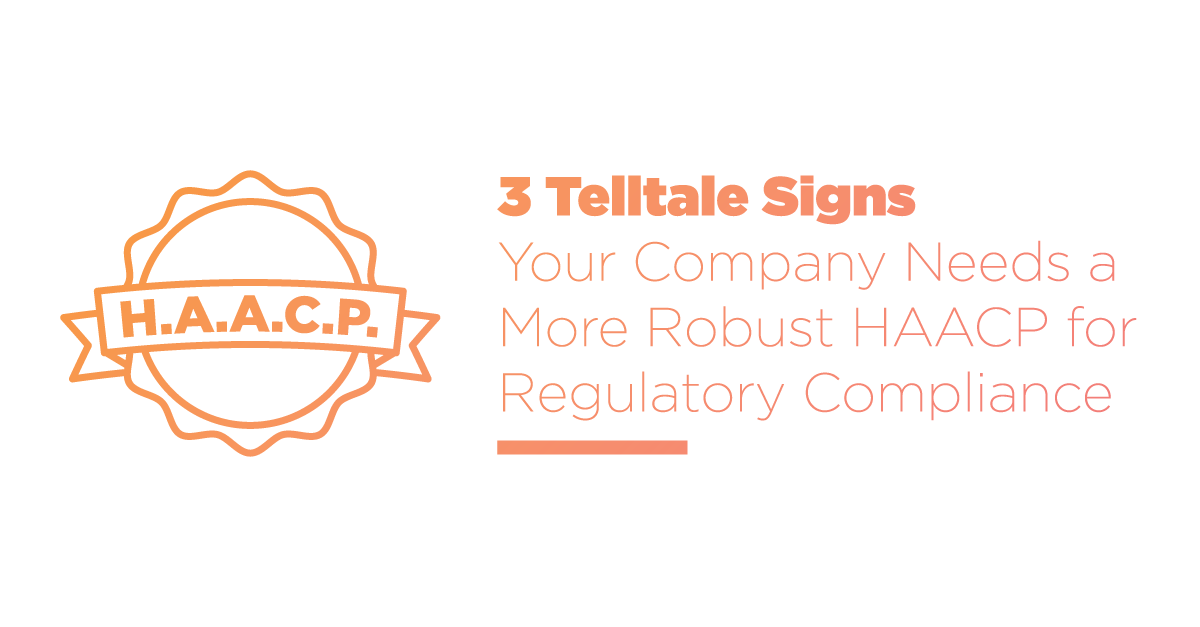Supply chain quality managers are responsible for ensuring their company’s products meet certain brand and regulatory standards, including the Food Safety Modernization Act (FSMA) in the United States and the Global Food Safety Initiative (GFSI) overseas. In addition to these regulatory standards, quality managers need to set their own brand and product standards to make sure they comply with these regulations and meet their customers’ standards. Quality managers can use HACCP plans or Hazard Analysis and Critical Control Points to weed out potential issues with their food products before they reach the market. Here are some telltale signs that you need to implement a stricter HACCP plan to meet or exceed company and regulatory standards.
1. Frequent Recalls
If a company is experiencing frequent product recalls due to poor quality or contamination, quality managers need to find a better way of vetting their suppliers and maintaining quality standards. Recalls should not be a frequent occurrence. With the right quality standards and a robust HACCP plan in place, you can ensure that your suppliers are delivering quality ingredients that will pass federal regulations and customer standards with ease.
2. Rising Customer Dissatisfaction
Customers don’t have a lot of patience when it comes to poor quality food. Unlike a poorly-made piece of clothing or a malfunctioning appliance, consumers have a more intimate relationship with the food they eat. If a company is seeing a rise in customer complaints on review websites like Yelp or direct negative feedback on social media channels like Twitter and Facebook, quality managers need to identify and respond to these problems at their root. Poor quality food products can stem from poor ingredients, mishandled food, or even the spread of contamination. Implementing a more detailed and precise HACCP plan helps companies maintain their brand’s positive reputation. This can be achieved in an effective manner by integrating quality control software that helps unify standards across all aspects of the brand.
3. Uneven Quality Standards
Even if a product doesn’t need to be recalled and customers aren’t taking to social media to voice their concerns, you still need to watch out for uneven quality in your company’s food products. Without quality assurance and quality control, customers will eventually notice an uneven experience with your products, which can lead to an uneasy relationship with the company’s brand. To ensure consistent quality, you need to come up with clear quality standards for your suppliers as well as clear workflows for corrective action.
How Quality Managers Can Use HACCPs to Increase Brand Value
One of your best tools for reducing risk is your HACCP, meaning you can meaningfully build on the minimum required by the FDA to support and strengthen your brand standards. Additionally, you can use your HACCP plan as a KPI tool, tweaking and comparing past iterations to help your quality team understand the risks associated with the business, including performance of critical contamination points (CCP), hazards in the food manufacturing process, and issues with the ingredients used in production. HACCPs also help with corrective action and preparation for a worst-case scenario. If a food product needs to be recalled, and existing, robust corrective action policy will help you fix problems fast. Ultimately, HACCPs are necessary when it comes to passing federal and international regulations, maintaining consistent brand value, and keeping customers satisfied.
How to Implement an Effective HACCP Plan
You can start implementing an effective HACCP plan by taking stock of your food products, suppliers, manufacturing process and all aspects of production that could affect the quality of your products. Quality managers need to identify any possible risks associated with the manufacturing process, including how and when certain ingredients or products could become contaminated, how and why product quality could change during the course of production, and the eventual fallout that could occur as a result of these risks.
Your plan should then do everything it can to reduce these risks and ensure quality is consistent throughout the manufacturing process. This step involves thoroughly vetting suppliers, inspecting the ingredients used in the manufacturing process, and extensively documenting your company’s relationship with suppliers. You also need to set up a comprehensive corrective action plan that streamlines the recall process. This may also include a public relations strategy, mitigating customer concerns, and holding suppliers accountable for their actions.
Ultimately, it’s wise to use every tool at your disposal to protect your business liabilities, keep consumers healthy and safe, and maintain consistent brand experiences. Quality managers can use digital supply quality management tools like RizePoint to make sure their manufacturing processes and suppliers are meeting brand and regulatory standards at every turn.
